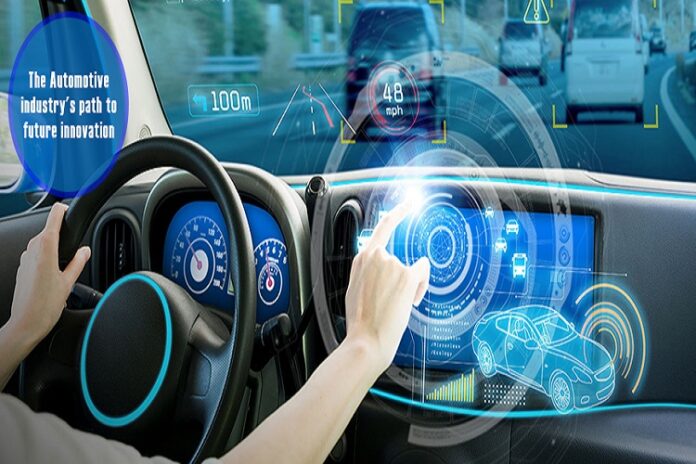The automotive industry is an ever-evolving sector that plays a significant role in shaping the way we travel and interact with vehicles. From technological advancements to consumer preferences changes, the industry is constantly evolving to meet the demands of a rapidly changing world. HetrainsShetrains.com is the place to go to learn about the latest developments in the automotive industry and discover the trends that will shape the future of mobility.This article will explore the latest trends, advancements, and developments in the automotive industry.
Electric Vehicles and Sustainable Mobility:
One of the most prominent trends in the automotive industry is the growing adoption of electric vehicles (EVs). EVs have gotten a lot of attention lately due to worries about climate change and a move toward sustainable transportation. Governments throughout the world are establishing incentives to promote the adoption of electric vehicles, and major automakers are investing extensively in creating electric versions. More people can now consider EVs as a feasible alternative because of improvements in range and charging infrastructure brought about by advances in battery technology.
Autonomous Driving and Advanced Driver Assistance Systems:
The development of autonomous driving technology has the potential to revolutionize the automotive industry. While fully autonomous vehicles are still in the testing phase, significant progress has been made in advanced driver assistance systems (ADAS). Features such as adaptive cruise control, lane-keeping assist, and automatic emergency braking are becoming more common in modern vehicles. These technologies improve safety, reduce accidents, and enhance the overall driving experience. Discover the Unknown Factors That Drive Automotive Progress: Car Insurance Quotes Net is the place to go to learn about the most recent developments and trends in the field.
Connectivity and IoT Integration:
The automotive industry is embracing connectivity and the integration of Internet of Things (IoT) technology in vehicles. Connected cars allow for seamless communication between vehicles, infrastructure, and the Internet. This connectivity enables real-time data exchange, remote vehicle diagnostics, over-the-air software updates, and enhanced navigation and entertainment systems. It also paves the way for vehicle-to-vehicle (V2V) and vehicle-to-infrastructure (V2I) communication, which can improve road safety and traffic management.
Shared Mobility and Ride-Hailing Services:
The rise of shared mobility and ride-hailing services has disrupted the traditional automotive landscape. Companies like Uber and Lyft have transformed the way people think about transportation, leading to a decline in private vehicle ownership, especially in urban areas. This shift towards shared mobility has prompted automakers to explore new business models and invest in mobility services. Taxi-Bmw is the site to go to learn about the newest automotive trends and advancements and to get excited about the future of mobility. Some manufacturers are even entering partnerships with ride-hailing companies or developing their own shared mobility platforms.
Lightweight Materials and Fuel Efficiency:
With a growing emphasis on fuel efficiency and reducing carbon emissions, automakers are turning to lightweight materials to build more efficient vehicles. The use of advanced materials such as aluminum, carbon fiber, and high-strength steel helps reduce the weight of vehicles without compromising safety. Lighter vehicles require less energy to propel, leading to improved fuel economy and reduced environmental impact.
Advanced Manufacturing and 3D Printing:
Advancements in manufacturing technology have had a significant impact on the automotive industry. Automation, robotics, and artificial intelligence are being utilized to improve production processes, reduce costs, and enhance quality control. Additionally, 3D printing is gaining popularity in the automotive sector, allowing for rapid prototyping, customization, and the production of complex components. This technology has the potential to streamline supply chains and revolutionize the manufacturing process.
Digitalization and User Experience:
The digital revolution has transformed the automotive industry’s approach to user experience. Infotainment systems, touchscreen interfaces, voice recognition, and smartphone integration have become standard features in modern vehicles. Seamless connectivity and intuitive interfaces enhance the driving experience and provide occupants with access to a wide range of services and entertainment options.
Safety and Advanced Driver Assistance Systems (ADAS):
Safety remains a top priority for the automotive industry. Advancements in safety systems, including adaptive cruise control, forward collision warning, blind-spot detection, and automatic emergency braking, have significantly reduced the number of accidents. Automakers continue to invest in research and development to further enhance safety features and achieve the goal of zero-emission.
Regulatory Landscape and Emission Standards:
Government regulations and emission standards continue to shape the automotive industry. Stricter regulations are being implemented to reduce greenhouse gas emissions and promote the use of cleaner technologies. Many countries are phasing out internal combustion engines and setting targets for electric vehicle adoption. Automakers must stay compliant with these regulations and invest in sustainable technologies to remain competitive.
Consumer Preferences and Mobility Solutions:
Changing consumer preferences are influencing the direction of the automotive industry. Consumers are increasingly interested in sustainability, connectivity, convenience, and personalized mobility solutions. Automakers are adapting to these preferences by offering a wide range of electric and hybrid vehicles, integrating advanced technology, and exploring innovative mobility concepts such as car-sharing and subscription-based models.
Conclusion:
In conclusion, the automotive industry is experiencing rapid transformation driven by technological advancements, shifting consumer preferences, and regulatory changes. Automakers must adapt to these trends, invest in research and development, and embrace sustainability to thrive in an ever-changing automotive landscape. The future of the industry holds exciting possibilities for safer, greener, and more connected vehicles that redefine the way we travel.









